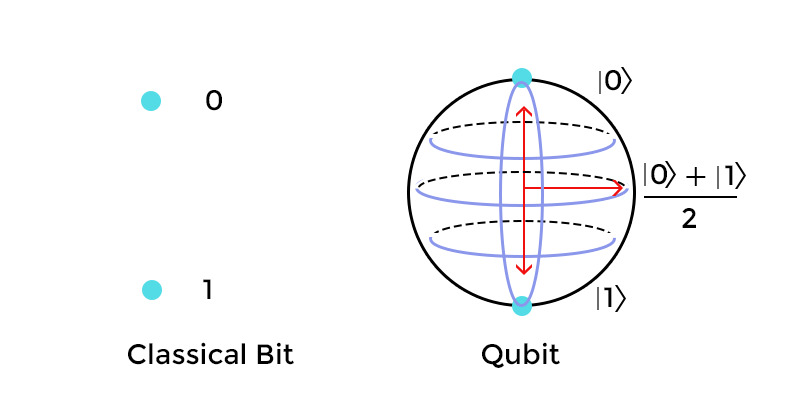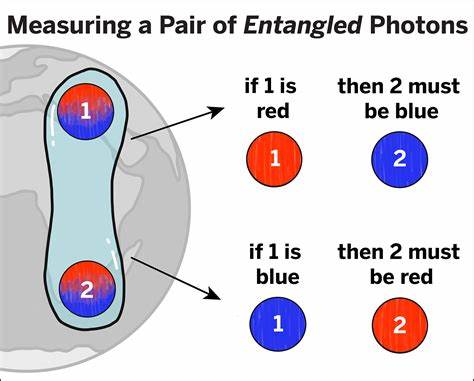In the last few posts, I talked about quantum computing, where the laws of classical physics take a back seat, and the strange principles of quantum mechanics reign supreme. In this beginner-friendly exploration, we’ll delve into the heart of quantum computing, shedding light on two crucial concepts: qubits and quantum entanglement.
Qubits:
At the core of quantum computing lies the qubit, a quantum analog to classical bits. While classical bits can exist in one of two states, 0 or 1, qubits have the remarkable ability to exist in a superposition of both states simultaneously. This unique feature enables quantum computers to perform complex calculations at speeds that defy the limits of classical computation.
Imagine a classical bit as a coin, where it can be either heads (0) or tails (1). In contrast, a qubit is like a magical coin spinning in the air, existing in a state of both heads and tails until observed. This superposition is a fundamental aspect of quantum computing, allowing quantum computers to explore multiple possibilities at once.

Entanglement:
Another quantum phenomenon that plays a pivotal role in quantum computing is entanglement. When qubits become entangled, the state of one qubit becomes directly linked to the state of another, regardless of the physical distance between them. This interconnectedness allows quantum computers to perform highly parallel computations, making them exceptionally powerful for certain types of problems.

Harnessing Quantum Power:
To harness the power of qubits, quantum computers employ quantum gates, which manipulate the quantum states of qubits. These gates perform operations analogous to classical logic gates but with the added advantage of exploiting quantum superposition and entanglement.
Quantum computers excel in solving specific problems that are computationally intractable for classical computers. For example, they show great promise in factoring large numbers exponentially faster than classical algorithms, a task crucial for encryption methods widely used today.
Challenges and Real-world Implications:
While the potential of quantum computing is thrilling, building and maintaining stable quantum computers is a formidable challenge. Qubits are highly susceptible to environmental factors, such as temperature and electromagnetic interference, leading to errors in calculations. Researchers are actively working on error correction techniques and novel approaches to build more robust quantum systems.
Looking ahead, quantum computing has the potential to revolutionize fields such as cryptography, optimization, and drug discovery. As the technology advances, we may witness breakthroughs that were once deemed impossible with classical computing.
Conclusion:
Embarking on a journey into the quantum realm, we’ve only begun to grasp the transformative power of quantum computing, with our focus on the enigmatic qubits and the quantum phenomena that define this cutting-edge field. As we stand at the precipice of a quantum revolution, it’s clear that the fusion of quantum mechanics and computation holds immense promise.
In this ever-evolving landscape, quantum computers are not merely tools for faster calculations; they represent a paradigm shift in our understanding of information processing. The potential applications, from cryptography to drug discovery, hint at a future where problems once deemed insurmountable become solvable in the blink of a quantum eye.
While challenges persist in stabilizing quantum systems and mitigating errors, the relentless pursuit of advancements by researchers worldwide fuels the optimism that practical quantum computing is not a distant dream but a reality on the horizon.
As we anticipate the unfolding chapters in the quantum saga, one thing is certain: quantum computing is not just a leap in technology; it’s an invitation to reimagine the possibilities of computation, ushering in an era where the unimaginable becomes achievable, and the complexities of our world are unraveled by the subtle dance of qubits in the quantum symphony. The quantum frontier beckons, and we’re only just beginning to explore its boundless potential.